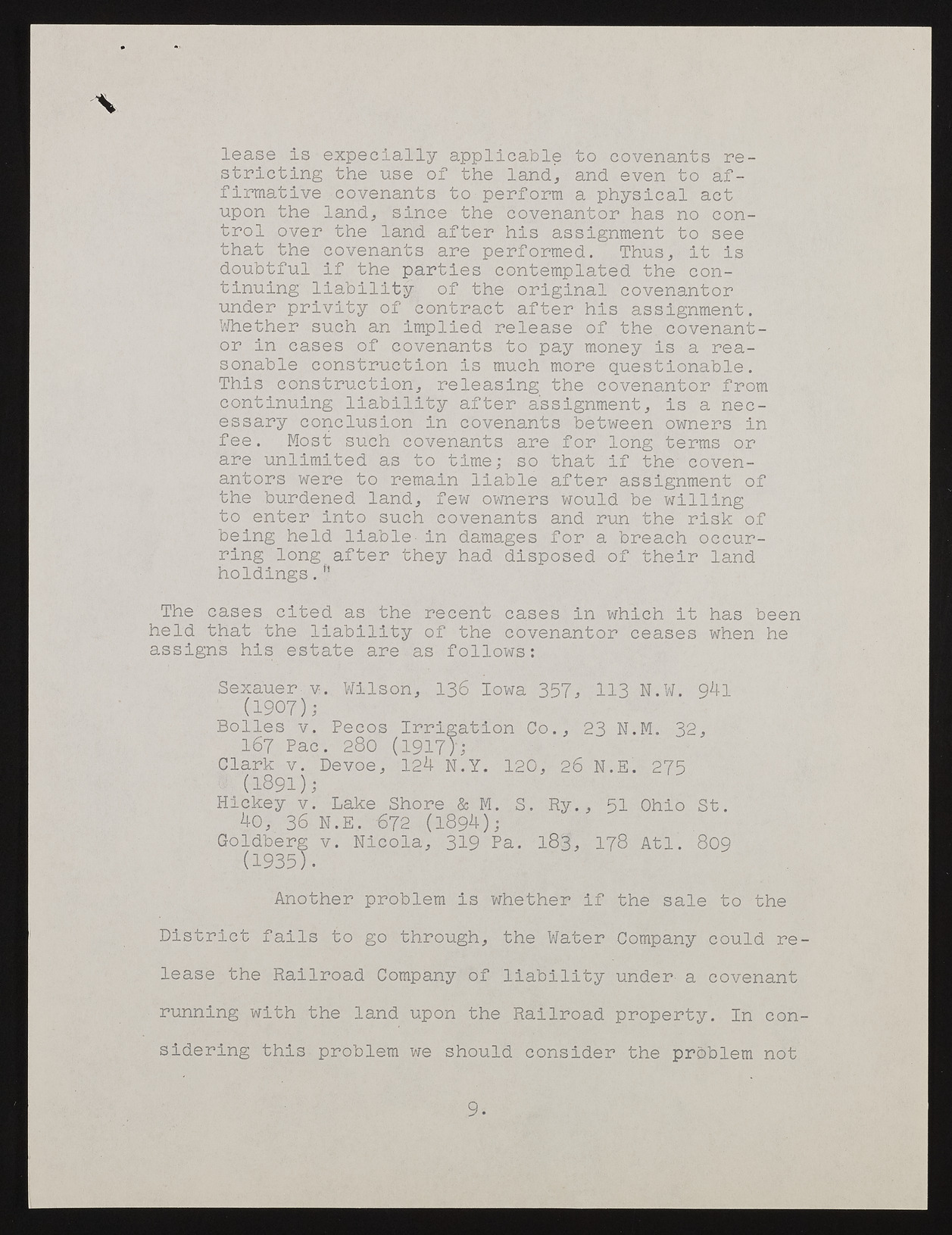Copyright & Fair-use Agreement
UNLV Special Collections provides copies of materials to facilitate private study, scholarship, or research. Material not in the public domain may be used according to fair use of copyrighted materials as defined by copyright law. Please cite us.
Please note that UNLV may not own the copyright to these materials and cannot provide permission to publish or distribute materials when UNLV is not the copyright holder. The user is solely responsible for determining the copyright status of materials and obtaining permission to use material from the copyright holder and for determining whether any permissions relating to any other rights are necessary for the intended use, and for obtaining all required permissions beyond that allowed by fair use.
Read more about our reproduction and use policy.
I agree.Information
Digital ID
Permalink
Details
More Info
Rights
Digital Provenance
Publisher
Transcription
m lease is expecially applicable to covenants restricting the use of the land, and even to affirmative covenants to perform a physical act upon the land, since the covenantor has no control over the land after his assignment to see that the covenants are performed. Thus, it is doubtful if the parties contemplated the continuing liability of the original covenantor under privity of contract after his assignment. Whether such an implied release of the covenantor in cases of covenants to pay money is a reasonable construction is much more questionable. This construction, releasing the covenantor from continuing liability after assignment, is a necessary conclusion in covenants between owners in fee. Most such covenants are for long terms or are unlimited as to time; so that if the' covenantors were to remain liable after assignment of the burdened land, few owners would be willing to enter into such covenants and run the risk of being held liable- in damages for a breach occurring long after they had disposed of their land holdings.11 The cases cited as the recent cases in which it has been held that the liability of the covenantor ceases when he assigns his estate are as follows: Sexauer-v. Wilson, 136 Iowa 357, 113 N.W. 94l (1907); Bolles v. Pecos Irrigation Co., 23 N.M. 32, 167 Pac. 280 (1917)3 Clark v. Devoe, 124 N.Y. 120, 26 N.E. 275 (1891); Hickey v. Lake Shore & M. S. Ry., 51 Ohio St. 40, 36 N.E. 672 (1894); Goldberg v. Nicola, 319 Pa. 183, 178 Atl. 809 (1935). Another problem is whether if the sale to the District fails to go through, the Water Company could re lease the Railroad Company of liability under- a covenant running with the land upon the Railroad property. In con sidering this problem we should consider the problem not 9.

